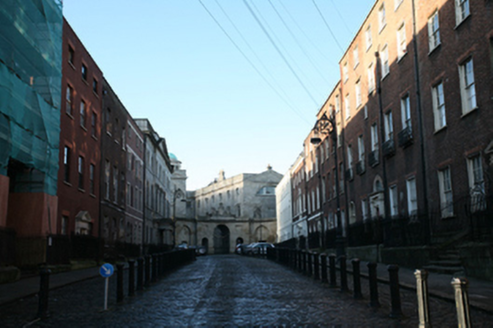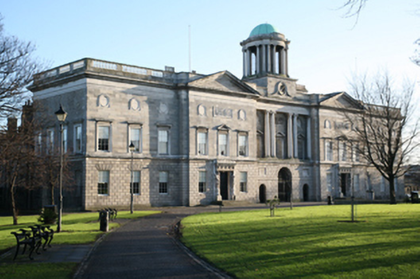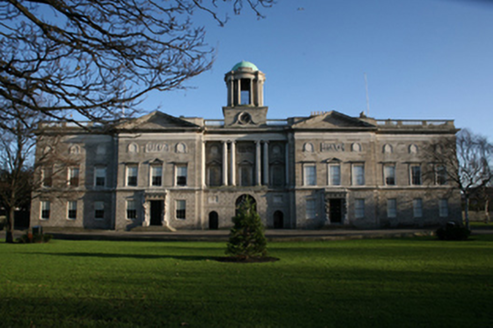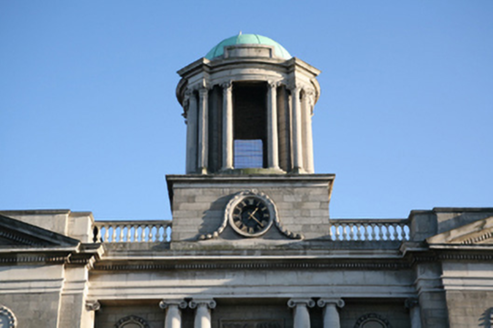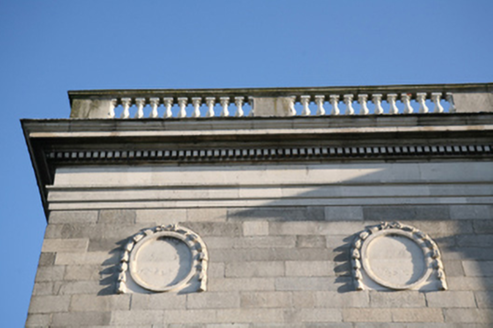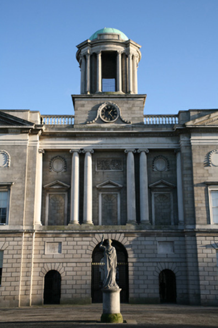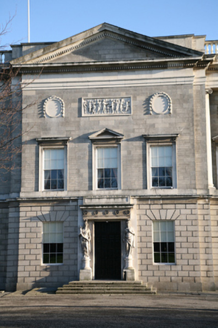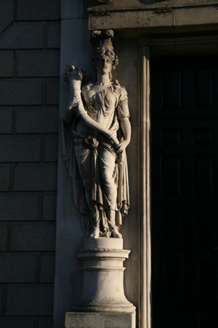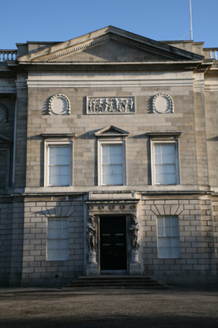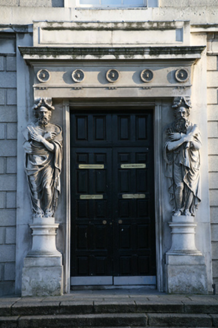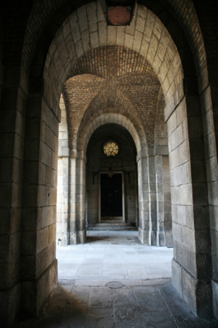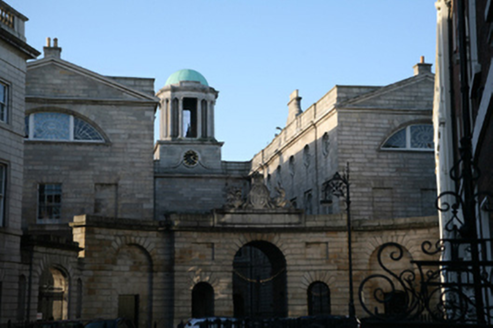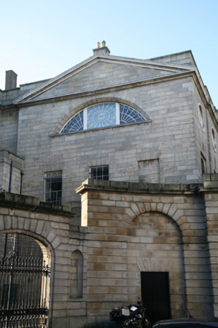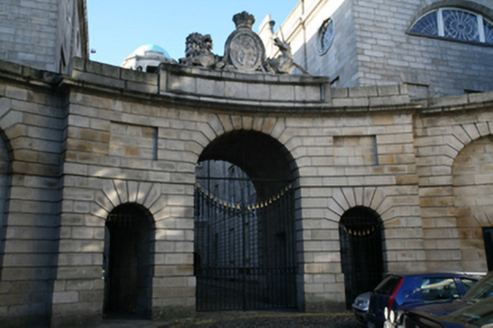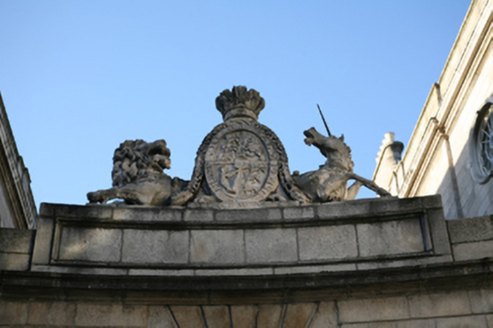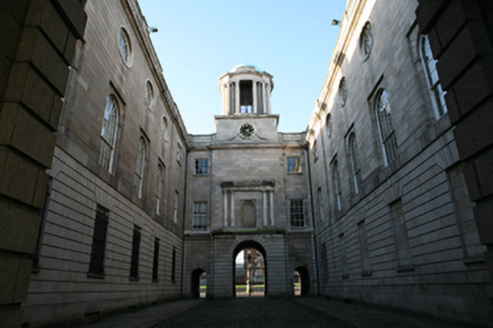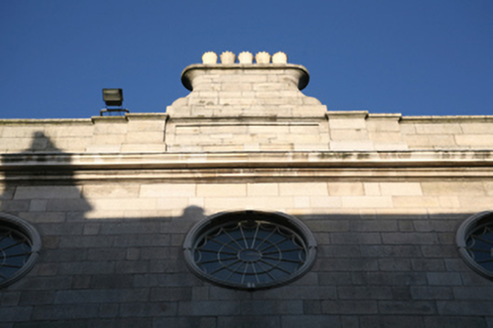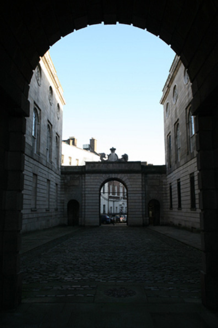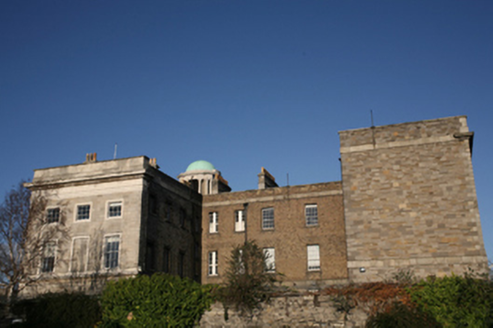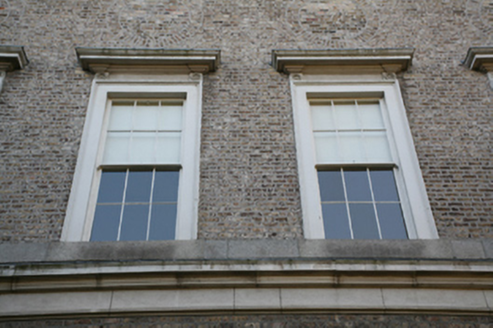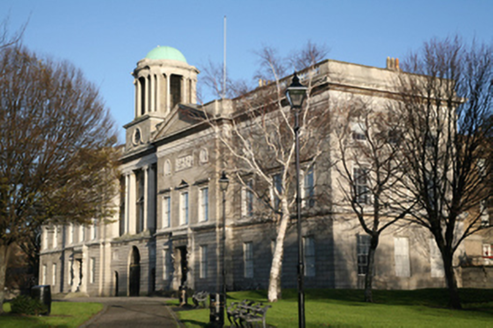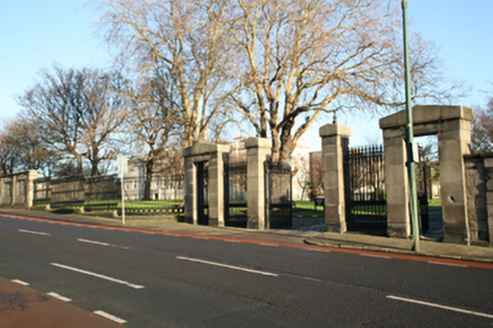Survey Data
Reg No
50010680
Rating
National
Categories of Special Interest
Architectural, Artistic, Social
Original Use
College
In Use As
Library/archive
Date
1795 - 1850
Coordinates
315122, 234999
Date Recorded
17/12/2011
Date Updated
--/--/--
Description
Detached symmetrical fifteen-bay two-storey neo-Classical public building, with concealed basement and attic, begun as nine-bay building 1800, to designs of James Gandon, with central entrance block surmounted by domed tempietto flanked by pedimented halls extending to rear forming U-plan. Completed by Francis Johnston 1817 with addition of triumphal arched entrance screen to east, later extended by three bays to either end by Frederick Darley in 1846 (north) and Jacob Owen in 1849 (south). Pitched slate roofs throughout with granite ashlar chimneystacks, hidden behind balustraded Portland stone parapet wall. Three-bay breakfronts have full dentillated pediments rising above parapet wall. Granite ashlar base on square plan rises from parapet to central block with Portland cornice and iron clock face and margent surround to front supporting peristyle Corinthian Portland stone tempietto surmounted by copper dome. Coursed granite ashlar walls, channel rusticated to ground floor with Portland stone cornice over ground floor and surmounted by Portland stone architrave, frieze and deep moulded dentillated parapet cornice. Three-bay central entrance block slightly recessed with giant Ionic order Portland stone columns flanking each pedimented blind niche, rising from first floor to architrave. Central bay surmounted by rectangular figurative carved tablets with roundel panels and margent surrounds to flanking bays, repeated to flanking breakfronts with roundels repeated to north and south wings. Square-headed window openings with moulded Portland stone architrave surrounds, simple cornice, pediments to central bays and six-over-six pane timber sliding sash windows. Voussoired central round-arched entrance flanked by pedestrian arches with blind panels over, all having original wrought and cast-iron gates. Central square-headed door opening to each pedimented breakfront with elaborate Portland stone surround. Double-leaf timber panelled doors flanked by caryatids on round pedestals and square plinths supporting lintel cornice and paneled block. Ceres and Bacchante to north entrance, Security and Law to south entrance. Doors open onto granite platform and four granite steps. Brick-vaulted arched entrance arches lead to cobbled carriageway enclosed by five-bay side elevations to pedimented hall and library having oval second floor window openings with webbed glazing, round-headed window openings to first floor set in square-headed recesses having fifteen-over-fifteen pane timber sliding sash windows with spoked upper sash and blind bays to ground floor. Pedimented east end elevations with large Diocletian window openings to second floor having tripartite webbed glazing. East end of carriageway enclosed by curved triumphal arched screen built in coursed granite ashlar with three voussoired round-arched openings and decorative wrought and cast-iron gates surmounted by elaborate carved Portland stone trophy depicting royal arms. Screen extended to either side with voussoired blind arches having square-headed openings with timber sheeted doors. Four-bay three-storey over basement extension abutting south elevation to south library projecting beyond remainder of brick south elevation in turn set back behind three-bay south elevation to later south wing. Later north wing has four-bay north side elevation built in yellow brick abutted to east by two-storey over basement rendered block. landscaped park to west, Constitution Hill side of complex.
Appraisal
Started in 1800 by James Gandon this symmetrical building was reportedly Gandon’s favourite design. Built to replace the old Inns at the Four Courts site, the design failed to address Henrietta Street. Gandon resigned from the commission in 1804 and the project was completed by Francis Johnston in 1817 who also added the triumphal arch to the rear, thus solving some of the concerns on Henrietta Street. The unusual plan of two parallel halls connected by a decorative entrance block of only a single bay deep, creates a rear court or carriageway. While the later three-bay wings detract from Gandon’s original design, they replicate the composition and materials in a skilled manner and now form part of the overall composition and the wider collection of Dublin’s neo-Classical buildings, while terminating the vista of Henrietta Street.
